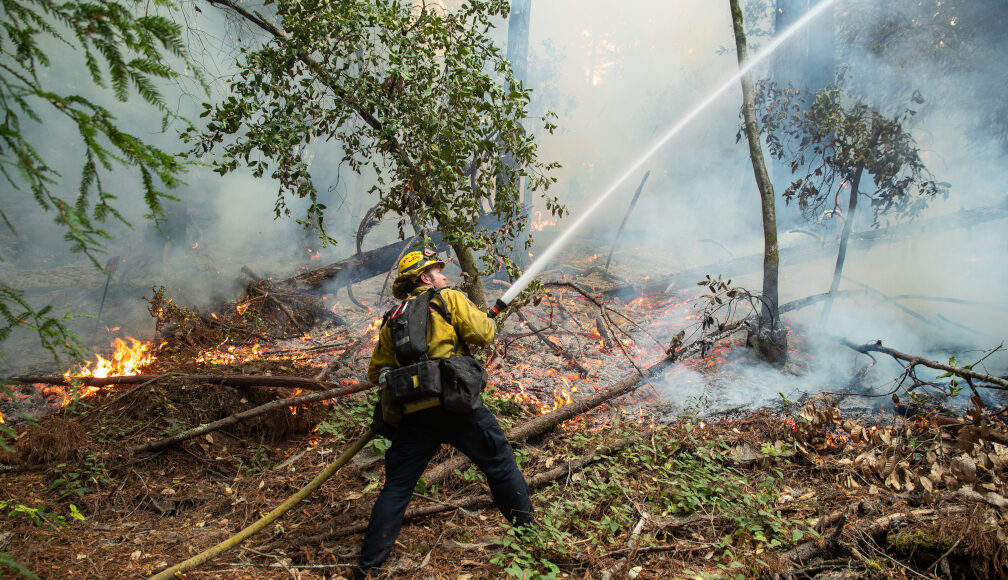As Santa Cruz County faces increasing threats of wildfire–spurred by drought and climate change–county leaders and fire officials must launch extensive programs to remove the undergrowth that fuels destructive blazes and threatens structures in wooded areas.
But while the county has several organizations dedicated to fighting fires, none have adequately addressed that issue, leaving the county without an overarching plan for vegetation removal and potentially exposing residents to future destructive wildfires.
That’s the gist of a report released in June from the Santa Cruz County Grand Jury, which recommends that the Board of Supervisors should by September designate an agency to lead vegetation removal efforts, and by June 2023 have a comprehensive plan of doing so.
But it’s not clear which agency this would be—there are several tasked with varying and often overlapping aspects of fire safety, which often show differing priorities.
This includes the Resource Conservation District of Santa Cruz County (RCD), the Office of Response, Recovery & Resilience (OR3), Santa Cruz County Fire Department, the Fire Department Advisory Commission (FDAC), The California Department of Forestry and Fire Protection Cal Fire), Santa Cruz Mountains Stewardship Network, the California Board of Forestry and Fire Protection and Santa Cruz County Fire Safe Council.
None of these, however, have posited a comprehensive plan for vegetation removal, the Grand Jury report says.
The Grand Jury acknowledges in the report that such removal can be expensive, with the bulk of what’s needed–roughly 23,000 acres–ringing in at an estimated $130 million.
With grant funding limited and difficult to acquire, the county should focus its efforts on high-priority areas, the report says.
In addition to wreaking havoc on structures and forcing the evacuation of thousands, the fires also damaged or destroyed communication systems and utilities, leaving many residents unable to receive safety updates. The highest priority for any vegetation removal plan, then, should be in areas where water, gas, communications and electricity utilities exist, in addition to schools, hospitals and government buildings, the report says.
Such projects are even more vital in areas where people live in rural and wooded areas, described in the report as the Wildlife Urban Interface (WUI.)
Santa Cruz County, with well over 20,000 homes in its WUI, has 61 square miles of WUI, 59 percent of which is developed with residences.
The report noted that some of the agencies are making positive strides in their efforts to address future fire risks.
The FDAC, for example, is updating its Santa Cruz County Fire Department Master Plan for the first time since 2015, an effort that will include evacuation maps, potential debris flows, Code Red notification, vegetation management, fire surveillance and increasing the number of volunteer firefighters.
Cal Fire has produced the Community Wildfire Prevention Plan (CWPP) and its strategic plan.
Santa Cruz Mountains Stewardship Network has completed a vegetation mapping project to categorize the wildfire risk level across the county.
A 10-year Public Works Plan from the Resource Conservation District lists multiple forest health and fuel reduction projects in areas of wildfire risk.
The Grand Jury also said that the Santa Cruz County Fire Department and the Santa Cruz County Office of Response, Recovery and Resilience should report every six months to the Board of Supervisors on vegetation reduction efforts.













